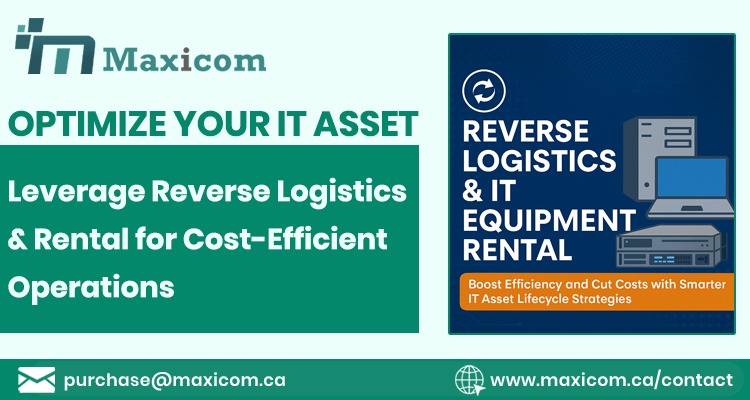In today’s fast-paced digital environment, businesses must optimize their IT operations to stay competitive and agile. Two powerful strategies that help achieve this are reverse logistics and IT equipment rental. Both play a crucial role in managing IT assets efficiently, reducing costs, and improving overall operational flexibility.
What is Reverse Logistics in IT?
Reverse logistics refers to the process of managing the return, refurbishment, resale, or disposal of IT equipment after its initial use. Unlike traditional logistics that focus on delivery and distribution, reverse logistics handles the lifecycle end, ensuring devices and components are responsibly recycled, repaired, or remarketed.
Benefits of Reverse Logistics for IT Operations
- Cost Savings: Recover value from outdated or surplus equipment through refurbishment or resale, reducing waste and expenses.
- Sustainability: Eco-friendly disposal and recycling practices reduce environmental impact and align with corporate social responsibility goals.
- Compliance: Ensures proper handling of sensitive IT assets to meet data security and regulatory standards.
- Inventory Management: Helps maintain accurate records of IT assets returning to the supply chain, improving resource planning.
Understanding IT Equipment Rental
IT equipment rental allows businesses to lease hardware such as servers, laptops, and networking gear for short or long-term use instead of purchasing outright. This flexibility is especially beneficial for projects, seasonal demand, or fast-scaling operations.
Advantages of IT Equipment Rental
- Reduced Capital Expenditure: Avoid large upfront costs by paying only for the equipment you need when you need it.
- Scalability: Quickly scale IT resources up or down based on business demands without the risk of asset obsolescence.
- Access to Latest Technology: Rental providers often update equipment regularly, giving you access to the newest IT hardware.
- Simplified Maintenance: Rental agreements often include support and maintenance, reducing the burden on internal IT teams.
How Combining Reverse Logistics and Rental Streamlines IT Operations
By integrating reverse logistics with IT equipment rental, businesses can achieve a seamless IT asset lifecycle management system. Equipment can be rented when needed and returned efficiently at the end of use, with providers handling refurbishment, data destruction, or recycling.
This approach results in:
- Optimized asset utilization, reducing idle equipment and unnecessary purchases.
- Improved cash flow management by lowering capital investments and operational costs.
- Enhanced environmental responsibility through sustainable handling of IT assets.
- Minimized IT downtime with faster access to required technology.
Why Partner with a Professional Provider?
Partnering with an experienced IT asset management company that offers both reverse logistics and rental services ensures secure, compliant, and cost-effective IT operations. Professionals handle data security, logistics coordination, and equipment lifecycle management, allowing your business to focus on core objectives.
Conclusion
Reverse logistics and IT equipment rental are more than just operational strategies—they are essential components for modern IT infrastructure management. Leveraging both can streamline your IT operations, reduce costs, and support sustainable practices.
Ready to optimize your IT asset lifecycle? Contact Maxicom today to explore tailored reverse logistics and IT rental solutions that fit your business needs.
